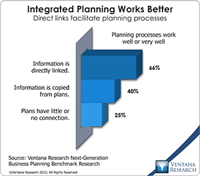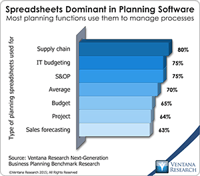
Tidemark Systems offers a suite of business planning applications that enable corporations to plan more effectively. The software facilitates rapid creation and frequent updating of integrated company plans by making it easy for individual business functions to create their own plans while allowing headquarters to connect them to create a unified view. I coined the term “integrated business planning” a decade ago to highlight the potential for technology to substantially improve the...
Topics: Planning, Predictive Analytics, Customer Experience, Marketing Planning, Reporting, Budgeting, Human Capital, Analytics, Business Analytics, Business Collaboration, Business Mobility, Cloud Computing, Governance, Risk & Compliance (GRC), Business Planning, Customer Performance Management (CPM), Financial Performance Management (FPM), Sales Performance Management (SPM), Supply Chain Performance Management (SCPM), Tidemark, Workforce Performance Management (WPM), Demand Planning, Integrated Business Planning, Project Planning










